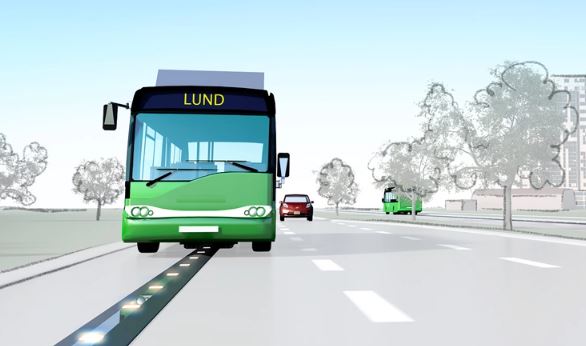Sweden is set to construct its first charging road for heavy vehicles on the E-20 highway stretch, which runs between Hallsberg and Örebro in the middle of the country’s three major cities. The 21-kilometer (13-mile) stretch of road, which is part of the European highway network, will be constructed with a wireless charging infrastructure down the center of the lanes that emits an electromagnetic signal to a coil on the underside of the vehicle. This is the only practical charging method for both cars and trucks. Construction is scheduled to begin in 2025, but the charging method has yet to be decided upon.
Previous charging roads in Europe have used methods that require overhead wires or undercarriage-mounted arms that attach to an electrified rail along the roadway, which is highly impractical for regular motorists. According to Jan Pettersson, the Director of Strategic Development at Trafikverket, the Swedish transport administration, the last option, wireless charging, is the only sensible one for cars and trucks. Without a sensible charging infrastructure in place, heavy-duty vehicles would require a huge amount of batteries to carry, which would lead to the vehicles becoming overloaded.
Euronews cited a recent study, which found that 412 privately driven cars on parts of Swedish national and European roads could have their battery capacity reduced by more than 50% through a combination of access to electrified roads and home charging. Moreover, only 25% of all roads would need to be electrified for the system to work.
Other countries such as Germany, Israel, and Italy have implemented similar projects. In the US, the Indiana Department of Transportation has built a wireless charging road designed by the German firm Magment, and in Michigan, a 1-mile stretch of road in Detroit will be electrified. The same company that built Sweden’s first wireless charging road pilot program on the Island city of Visby has been contracted for this project. The development of charging roads marks a significant step towards sustainable long-haul trucking, reducing carbon emissions, and helping to combat climate change.

